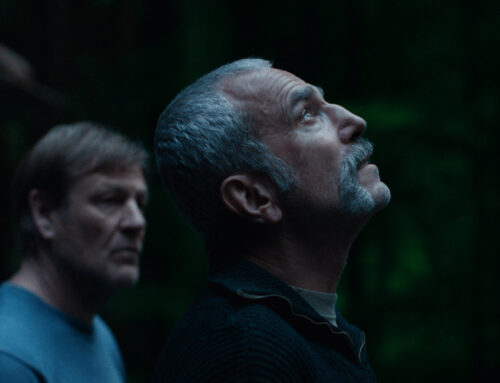I just watched one of the most well-made and inspiring documentaries to emerge in the last year: TO KILL A TIGER about a father’s fight for justice when his 13 year-old daughter is gang raped in their small Indian Village. This Canadian film with Mindy Kaling, Dev Patel, Atul Gawande and Pryanka Chopra among its executive producers has been nominated for BEST DOCUMENTARY FEATURE at this year’s 96th Academy Awards and has just been picked up by NETFLIX. With exceptional clarity and sensitivity, filmmaker Nisha Pahuja ushers us inside the experience of the young girl, her family, her village, and the misogynist group think about the crime –the biggest stumbling block to legal justice.
The film approaches its subject with genuine humility, and the result is enormous emotional and psychological intimacy. Before the opening credits, the camera is already at work, gently creating context, floating over the pastoral beauty of the landscape, music rising with the sound of wind through the trees–all in stark contrast to the ugly and too frequent crime which has been committed there. Rape is reported every 20 minutes in India and less than 30% result in convictions. The camera comes to rest on an ordinary farmer who speaks of the love he has for his firstborn, a daughter to whom he is devoted. He blames himself for what he might have done to prevent what happened to her. Within the first few minutes of the film, we hear the facts, and we understand the relationship of father to daughter which has motivated him to do what fathers here rarely do: take on centuries of traditional beliefs and stand up to his community against all odds of winning.
We also become aware of the exceptional courage it took for this family to allow cameras in. Ranjit’s daughter who is now over 18, consented to being seen on film in the hope that her story would help others. She asked only that her name be changed to “Kiran” to protect her identity, and also determined the language to be used in describing the perpetrators and the crime. With enormous composure, Ranjit relays the moments he first became aware of what happened. He describes waking up in the early morning hours to discover that his 13 year-old daughter had not yet returned home from a family wedding. A few hours later he sees her collapsing on the road. “Kiran” tells how she was dragged into the woods, her mouth covered up to silence her screams, and then being raped by three men. Ranjit takes Kiran to the police and to the doctor to be examined; the three men are taken into custody. This is only the beginning.
Ranjit and his family immediately find themselves at odds with their village. The local magistrate and the villagers think Kiran should marry one of the rapists since she is already “stained,” and believe this is the only way to restore her honor. They view this as a beneficial compromise. The compromise is instantly rejected by Kiran and her parents who hold their ground in the face of mounting pressure from the community who would rather not make this an embarrassing public legal matter. Various women’s rights activists and the filmmakers are the only ones who support Ranjit’s and his family’s quest for legal justice.
The ensuing legal journey takes years. The film takes its time, the camera lingering on small, revealing details– the ribbons Kiran ties in her hair, the family cooking dinner over an open flame, Ranjit barefoot in a muddy field as he slowly works the earth for planting. Will his seeds take root? We see the hurt and anger in their eyes even as they maintain the rhythms of everyday life. There is a stillness about the film which steadfastly records and reflects the quiet strength of this family, even as neighbors stop talking to them. The camera follows the activists as they gather the villagers– men and women separately– trying to build support for Kiran and her family, hoping to open their hearts and minds conditioned by centuries of custom entitling men, and victimizing women.
In remarkable scenes, we watch the villagers listening and reacting to questions which challenge their ingrained beliefs; some appear confused, others defensive, most silent. The camera catches the sidelong glances of the men looking down on Ranjit for not protecting his daughter. We also see Ranjit wrestling with his own fear and guilt in the face of physical threats to the family, while Kiran’s resolve never falters. The idea that she is “stained” is refuted by the dignity with which she carries herself and the import is clear: the stain is not on her but on the men and the culture which enabled them, and whom we see walking in restraints yet defiant as they are led to the courthouse.
Will justice prevail? Will Kiran and Ranjit stay the course? And what of these young men, once friends and neighbors of Kiran’s family? The suspense before the verdict is palpable and our investment in the outcome undeniable. In an increasingly corrupt and cynical era when taking on the system or holding people accountable under the law can seem like a fool’s errand, the grit and courage of this family is light in the darkness. TO KILL A TIGER is essential viewing– see it and remember what’s possible. On Netflix. More Screening/ticket info here!






Leave A Comment
You must be logged in to post a comment.